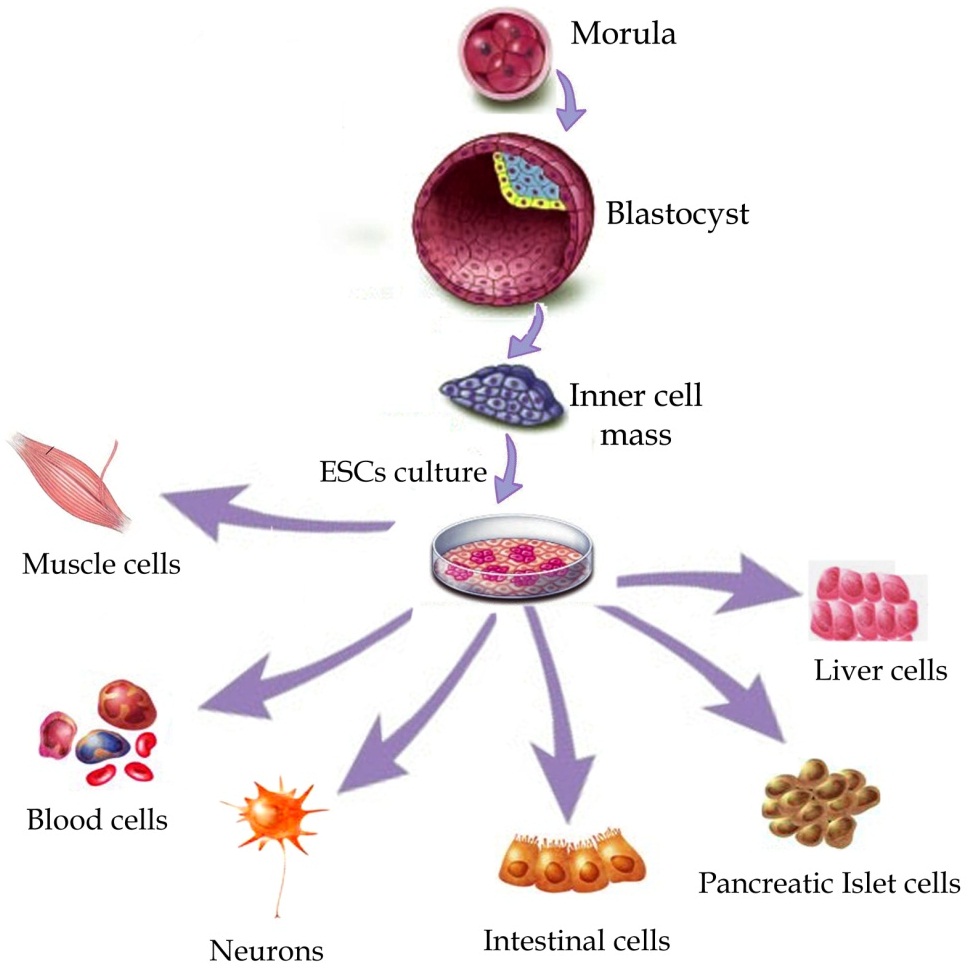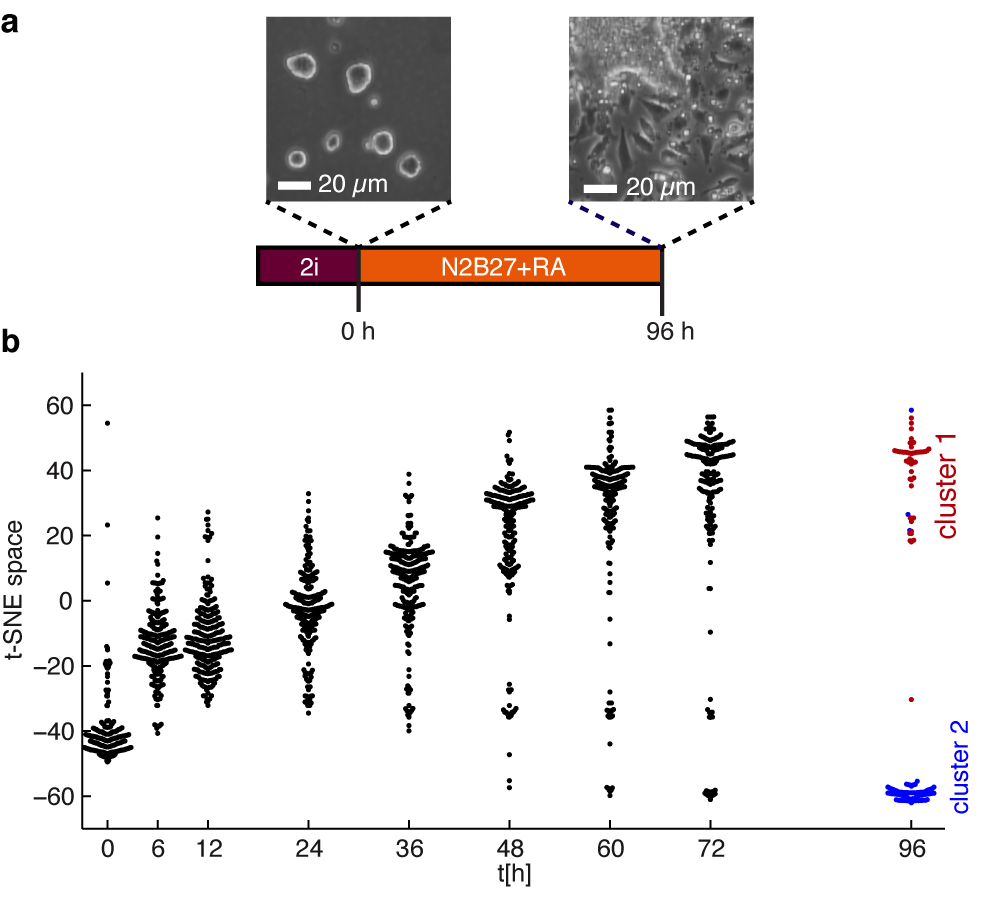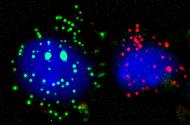Current projects
Cell-fate decision-making
Cell-fate decision-making is at the heart of important biological processes: embryonic development, tissue regeneration and tumor formation. In each of these processes unspecialized (pluripotent) stem cells become progressively specialized and choose between alternative cell types (fates). During embryonic development decision-making leads to the robust and timely formation of the whole organism starting from a single (totipotent) cell. While pluripotent cells in the embryo exist only transiently, the more specialized adult stem cells persist throughout the lifetime of the organism to regenerate tissue after injury or normal wear and tear. In order to keep the numbers of different cell types at constant levels they integrate a large variety of internal and external signals to make the correct cell-fate decisions. Similarly to healthy tissue certain types of tumors contain cells, which share key properties of stem cells. Most importantly these cancer stem cells are able to initiate and regenerate the tumor, which makes them prime targets of cancer therapy.

Our lab is interested in the fundamental molecular mechanisms underlying cell-fate decision-making in stem cells. Following a reductionist approach we use embryonic stem cells (ES cells) as a model system to study decision-making. ES cells have the convenient property to self-renew indefinitely in vitro while being able to differentiate into every cell type of the adult body. When a population of ES cells is differentiated, for example with a chemical cue, the cells will respond in a heterogeneous manner, despite being genetically identical. We are interested in this heterogeneity for two reasons: First, heterogeneity is problematic in medical applications of stem cells, which require pure populations of a specific cell type. On the other hand it is an opportunity to study the gene regulatory networks, which govern cell fate specification.

To characterize the dynamically unfolding cell state diversity at the single level we measure gene expression in single cells using single-cell RNA sequencing and single-molecule FISH. Currently we are studying the response of ES cells to retinoic acid (RA), a potent differentiation agent, which is used in the treatment of leukemia. Within only 96h of RA exposure stem cells dramatically change their morphology from compact colonies to heterogeneous epithelial sheets (panel a). Using a recently developed single-cell RNA-seq method (SCRB-seq, Soumillon, Cacchiarelli, Semrau et al., biorxiv) we characterized the transcriptional profiles of thousands of single cells during the differentiation time course. This high-dimensional measurement is visualized in panel b. Each data point represents the transcriptional profile of an individual cell. Using t-distributed stochastic neighbor embedding (t-SNE) cells were placed in a one-dimensional space such that cells with similar gene expression are at close proximity. This mapping revealed a bifurcation into at two different transcriptional states. We identified these states as ectoderm-like and extraembryonic endoderm (XEN)-like cells.
To confirm the sing le-cell RNA-seq measurements we used single-molecule FISH to measure the gene expression of marker genes for ectoderm (pax6, shown in red) and XEN (gata6, shown in green) in individual cells. Each diffraction limited spot corresponds to a single mRNA molecule.
le-cell RNA-seq measurements we used single-molecule FISH to measure the gene expression of marker genes for ectoderm (pax6, shown in red) and XEN (gata6, shown in green) in individual cells. Each diffraction limited spot corresponds to a single mRNA molecule.
Our measurements showed that the two makers are expressed in a mutually exclusive manner. We are currently studying the molecular mechanisms which bias the cell fate decision to a particular outcome.
Method development
Cell sorting by RNA abundance
We have adapted single-molecule FISH for fluorescence activated cell sorting (Klemm, Semrau et al., Nat. Methods, 2014, pdf ). This technique allows us to sort cells based on RNA abundance for downstream applications such as RNA-seq or other genome-wide measurements.
fuseFISH: quantification of expressed gene fusions
Gene fusion are important cancer drivers. fuseFISH uses multiplexed single-molecule FISH in combination with particle image cross-correlation spectroscopy (PICCS, Semrau et al., Biophys. J., 2011, pdf) to quantify the expression level of gene fusions in individual cells (Semrau, Crosetto et al., Cell Rep., 2014, pdf ). A library of single-molecule FISH probes for fuseFISH and more information about the method can be found on the fuseFISH website .
Plans
In the future we will explore spatial effects in 3D culture systems and extend our single-cell methods beyond the measurement of RNA abundance.
